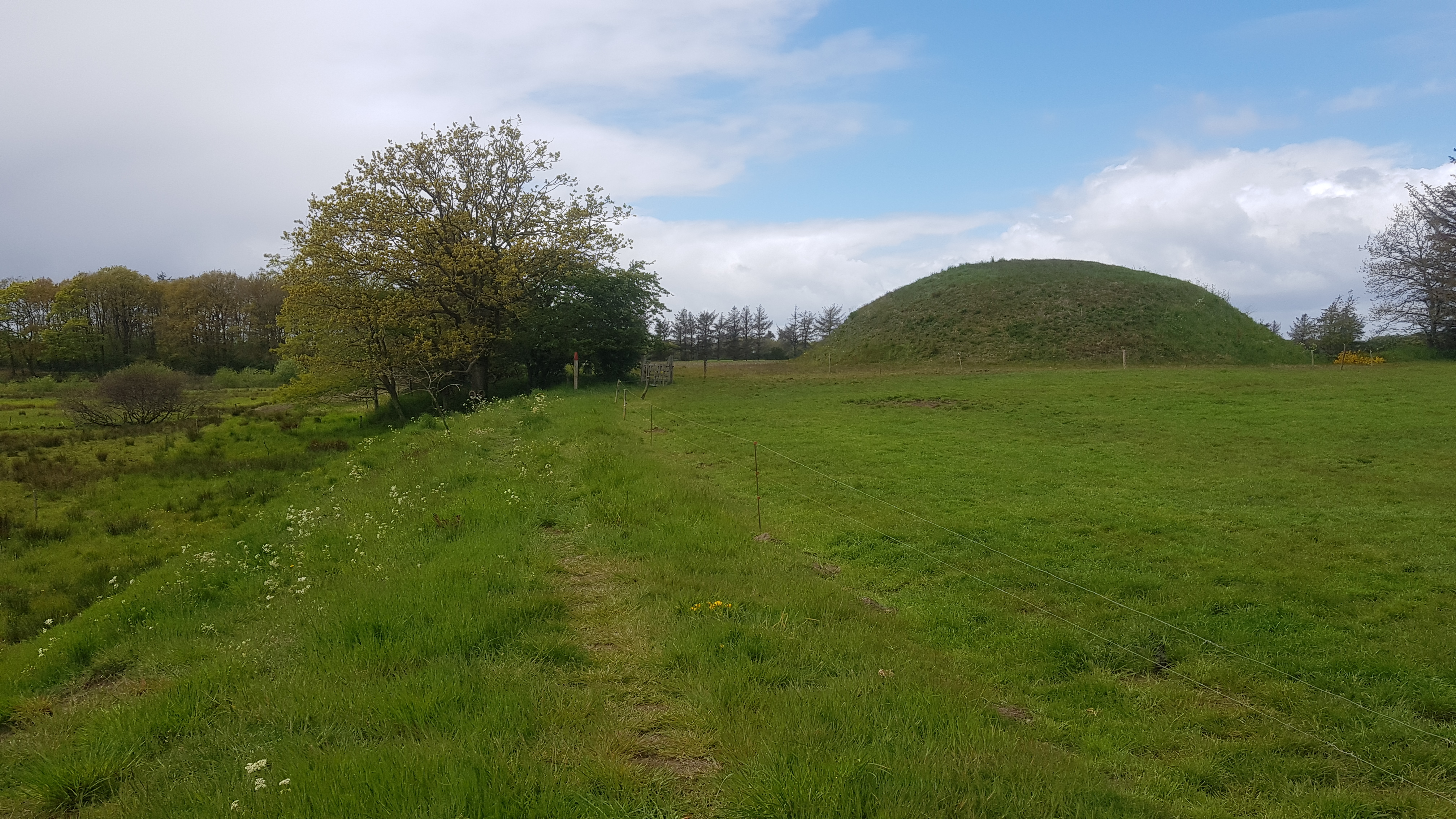Skelhøj on:
[Wikipedia]
[Google]
[Amazon]
 Skelhøj is a
Skelhøj is a
 Skelhøj is a
Skelhøj is a burial mound
Burial, also known as interment or inhumation, is a method of final disposition whereby a dead body is placed into the ground, sometimes with objects. This is usually accomplished by excavating a pit or trench, placing the deceased and objec ...
from the early Bronze Age
The Bronze Age is a historic period, lasting approximately from 3300 BC to 1200 BC, characterized by the use of bronze, the presence of writing in some areas, and other early features of urban civilization. The Bronze Age is the second pri ...
, situated near the Kongeå River in southern Denmark
)
, song = ( en, "King Christian stood by the lofty mast")
, song_type = National and royal anthem
, image_map = EU-Denmark.svg
, map_caption =
, subdivision_type = Sovereign state
, subdivision_name = Danish Realm, Kingdom of Denmark
...
. It was archaeologically excavated between 2002 and 2004.
History
Skelhøj is an individualburial mound
Burial, also known as interment or inhumation, is a method of final disposition whereby a dead body is placed into the ground, sometimes with objects. This is usually accomplished by excavating a pit or trench, placing the deceased and objec ...
that is part of a broader series of 26 along the Kongeå River in Southern Denmark
The Region of Southern Denmark ( da, Region Syddanmark, ; german: Region Süddänemark, ; frr, Regiuun Syddanmark) is an administrative Regions of Denmark, region of Denmark established on Monday 1 January 2007 as part of the 2007 Danish Munici ...
. It was likely built in one singular effort over the span of a few months. Other well preserved burial mounds from the area include , , , and Storehøj at Tobøl. Many such mounds were built across Denmark, predominantly during the Early Bronze Age
The Bronze Age is a historic period, lasting approximately from 3300 BC to 1200 BC, characterized by the use of bronze, the presence of writing in some areas, and other early features of urban civilization. The Bronze Age is the second prin ...
(1500 to 1100 cal. BC); scholar Jørgen Jensen estimated the number at 85,000.
The mound was dated to the 15th century BC using radiocarbon dating
Radiocarbon dating (also referred to as carbon dating or carbon-14 dating) is a method for determining the age of an object containing organic material by using the properties of radiocarbon, a radioactive isotope of carbon.
The method was dev ...
. Archeologists estimate that it was originally tall, though this had decreased to by the time excavations were undertaken, and in a broadly circular form with a diameter.
Construction
Archeologists suggest that the area where the mound was constructed was first burned to clear it, then the oak coffin was placed down and covered by acairn
A cairn is a man-made pile (or stack) of stones raised for a purpose, usually as a marker or as a burial mound. The word ''cairn'' comes from the gd, càrn (plural ).
Cairns have been and are used for a broad variety of purposes. In prehis ...
, at which point the barrow itself was built. It was likely built in one singular effort over the span of a few months, with eight different sections being constructed by different groups of workers. The mound was divided into eight sections, evocative of an eight-spoked wheel, each of which were constructed independently, and the groups involved in construction may have brought turf from the area they lived in.
The mound was robbed, likely shortly after construction, and another time in the 19th century.
Excavation
It was completely excavated from 2002 to 2004. Archeologists sought to study how the burial mound's oak coffin was preserved along with what was within it, how the barrow was constructed, and what the landscape around the mound looked like when the mound was constructed. They concluded that the coffin had been covered in large amounts of water shortly after burial, which created what they described as an "iron capsule" around the coffin through a chemicalreduction reaction
Redox (reduction–oxidation, , ) is a type of chemical reaction in which the oxidation states of substrate change. Oxidation is the loss of electrons or an increase in the oxidation state, while reduction is the gain of electrons or a d ...
.
References
{{DEFAULTSORT:Skelhoj Tumuli in Denmark